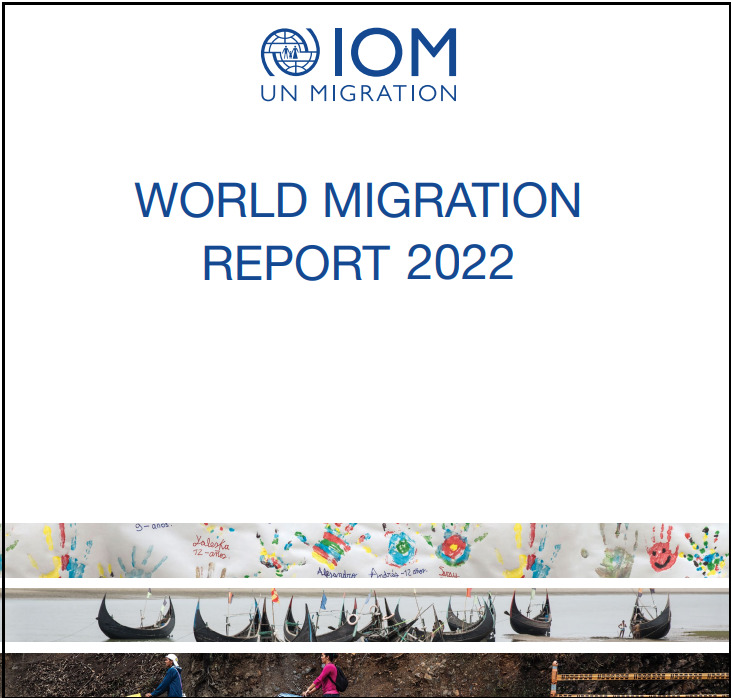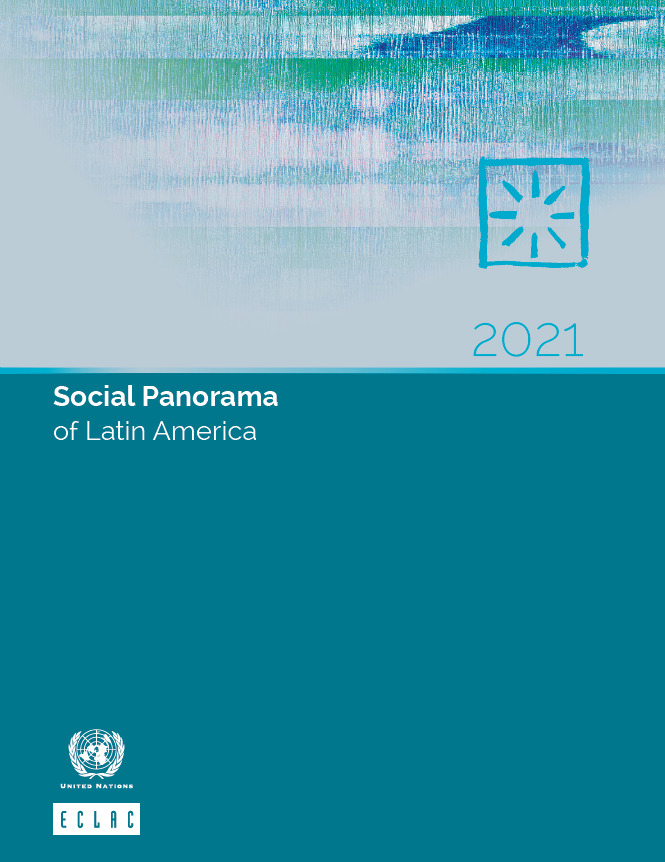Social distance and border closure as health measures to stop the spread of COVID-19 had profound consequences on the lives of migrants living in Chile since the restrictions on their mobility mean their ability to work and social integration into Chilean society has been reduced. At the same time, their exposure to the virus and social and racial segregation increased.
Reducing human mobility and closing borders were part of the health measures used most by governments around the world since March 2020 to stop the spread of COVID-19. This drastic change in the mobility of people affected not only the economy and large international industries -like tourism – but also socially and economically vulnerable groups such as migrants.
Pandemic and migration in Latin America
According to the World Migration Report of the International Organization for Migration (IOM), between 1970 and 2020, the number of migrants in the world grew from 84 to 281 million people, representing 3.6 % of the world population. During the last few years, migratory movements have increased within Latin America. This is referred to by researchers as “South-South Migration“, which means that people migrate from one South American country to another. In this context, Chile is one of the countries in the Latin American region that has received the largest number of immigrants in the last decade. Between 2014 and 2019, the total number of migrants went from making up 1 % to 8.6 % of the total population of Chile. The country receives migrants mainly from Venezuela, Colombia, Peru, and Haiti.
“In recent years, our country has experienced substantial changes in its economic model and system,” explains Roberto Gonzalez, professor at the Catholic University and Principal Investigator at the Center for Conflict and Social Cohesion Studies (COES). And he adds: “This situation was reflected in the increase in the country’s per capita income. This and other factors made it attractive for a migrant to come to Chile. For example, A woman who worked in Peru full time within the domestic service sector earned three times more than what she would earn in her country of origin”.
Cristian Velandia (30) is a Colombian immigrant who has lived in the country for six years and confirms this situation: “When I came, the idea was to save money to invest later. Chile is the only country in the Latin American region that is more financially stable. Sending money to Colombia is favorable because the Chilean peso is worth 4 or 5 times more than the Colombian peso,” he explains. This situation of economic stability persisted even after the Chilean social outbreak and the pandemic: “Things became difficult but even so it is not still a bad country,” he concludes.
Migration and pandemic in Chile
In March 2020, the SARS-CoV-2 virus was spreading through different countries without a clear solution on how to stop it. The closure of borders, a measure that several countries took simultaneously, meant in the first instance that the entry of migrants through regular borders suddenly stopped. Likewise, those migrants who were already living in the country saw their mobility limited and their ability to work and income reduced.
Colchane, the nightmare of the desert
Despite the closure of the borders, the pandemic did not stop the migratory flows. During the first months of the pandemic, images and stories of women, children, and men of all ages crossing the immense Atacama Desert to enter Chile through clandestine border crossings increased. This is the case of the town of Colchane, a town in northern Chile where between January and February 2021, the usual population doubled after thousands of migrants arrived in that city in search of a space to take refuge on their way to other destinations.
According to Martina Cocina, Ph.D. in Law and Political Science from the University of Barcelona and lawyer from the University of Chile, the pandemic ended up deepening the precarious conditions of living of migrants, as well as making their integration and social inclusion more difficult.
“The living conditions of migrants – already precarious – have been exacerbated by the pandemic,” she says. One example she lists is that children’s access to education was interrupted for several months. “The closure of schools, nurseries, and kindergartens has meant that migrant women have taken over these care tasks, affecting their ability to work,” she says.
“In relation to job opportunities, there is a significant percentage of the migrant population that works informally and their way of earning a living was reduced by health restrictions. This is especially true if we think of commerce on the streets”, she says. This statement is supported by the latest annual report of ECLAC called Social Panorama of Latin America which established that as a result of the prolonged health and social crisis stemming from the COVID-19 pandemic, poverty in Chile experienced a growth of 3.5%. In 2017, the percentage of people with serious difficulties in meeting their material needs was 10.7%.
In the case of Cristian Velandia, during the pandemic he ended his relationship with the mother of his son and carried out a series of “little business” to support himself financially: “The pandemic brought some relationship issues. For example, being in the same apartment 24 hours per day made it difficult to deal with stress, anxiety, etc. As well I had to look after my son, and it was difficult, but I included him in all my activities, and I was very involved in his education. However, he ended up going to Colombia with his mother”, he explains.
Covid-19 – Strengthens idea of border and security
“The pandemic reinforced the idea of the migrant as a threat, even at a point when we consider them as a health threat, which ended up translating into greater discrimination,” says Cocina, who recalls that during the first months of the pandemic, television and the media reinforced the idea that a migrant infected with COVID-19 was a danger to society. And she remembers a sad scene: Neighbors of the Quilicura district located in Santiago de Chile attacked a community of Haitian migrants for being infected with COVID-19.
“When the State is not capable of giving an adequate response to essential services, such as essential services such as education or health, the migrant is always used as a scapegoat,” Cocina sums up.
“The negative perception of immigrants and their presence in our country had already been fed for many years in Chile,” adds María Emilia Tijoux, professor of Sociology and academic at the University of Chile. “This is because there are no migration policies in Chile that consider migrants as persons that have equal rights. The pandemic and its consequences amplified the framing of migration as a security and order issue.”
This framing of migration as a security threat was deepening during the first months of lockdown in 2020, according to data provided by the Longitudinal Social Study of Chile (ELSOC) carried out by the Center for Studies of Conflict and Social Cohesion (COES). During the first months of 2020, contact between Chileans and migrants dropped dramatically due to social distancing measures: “The reduction of contact increased the sensation of a real and symbolic threat of migration,” explains Roberto González, Principal Investigator of COES, who is in charge of the study.
“According to the study, we can say that in general Chileans tend to keep their distance from immigration,” says González, who explains that the levels of trust toward Peruvian, Venezuelan, and Haitian migrants are relatively low (25 %). “Regarding the levels of realistic and symbolic threat for the fifth wave of COVID-19 in Chile in 2021, it is generally observed that Venezuelan migrants are the ones that arouse lower levels of threat in Chileans compared to Haitian migrants and Peruvians,” he indicates.
Given such a scenario, it is valid to ask how to reduce the threat? The answer is simple: increasing contact with migrants. “The idea that more migration is more of a problem is not necessarily true. Many people report that diversity can and does bring good things to their lives. What we know from ELSOC is that when you live segregated without contact with others, your attitudes and behaviors are driven by fear and not by what your own experience reveals. This is the perverse effect that segregation and the little contact with the population caused by COVID-19 have had,” González says.
“Migration must be understood from different angles because if we only look at migration from what caused the pandemic, we take the entire structure of how human mobility works and the subjectivities that accompany it out of context. That is why it is always necessary to try to understand it and accompany it from a humanistic perspective based on rights, above all, on rights,” concludes Tijoux.
Marta Apablaza Riquelme is a freelance science journalist based in Santiago, Chile









